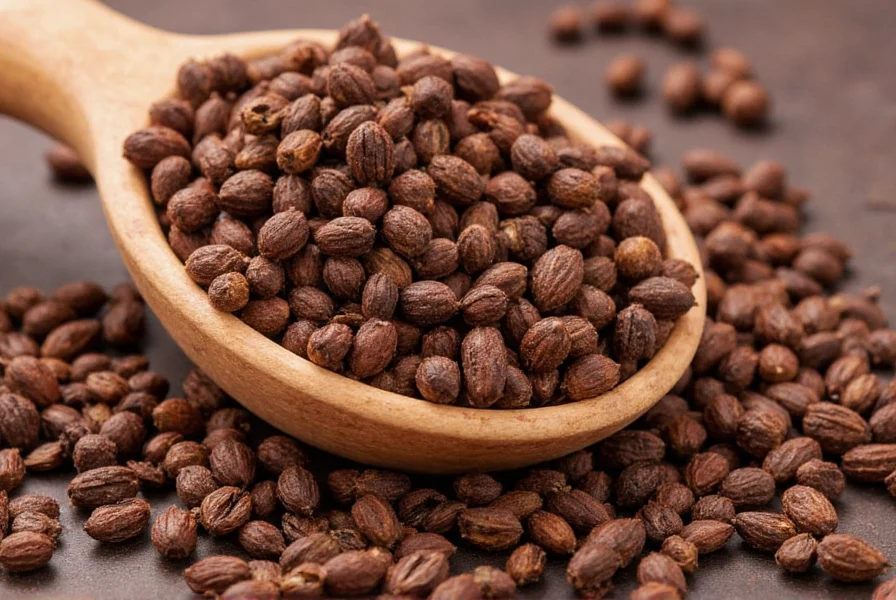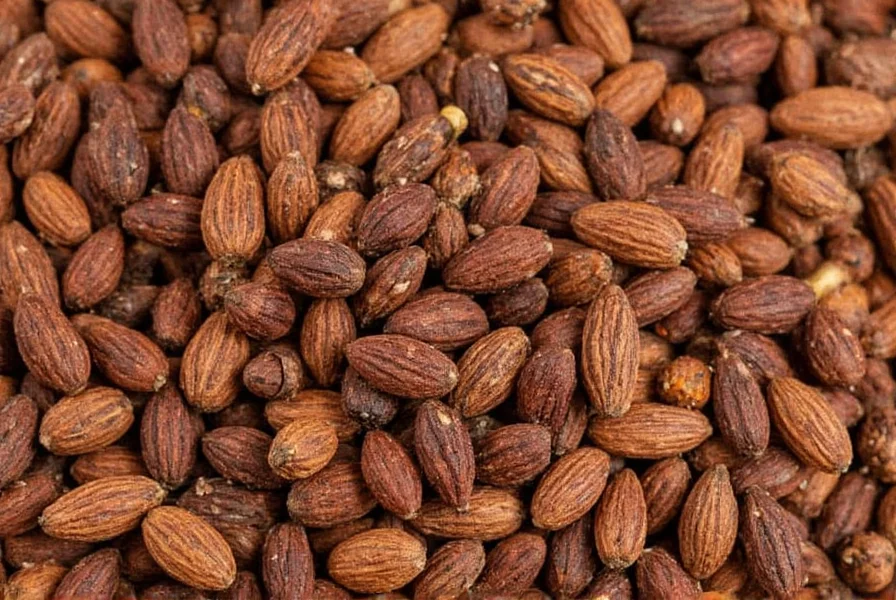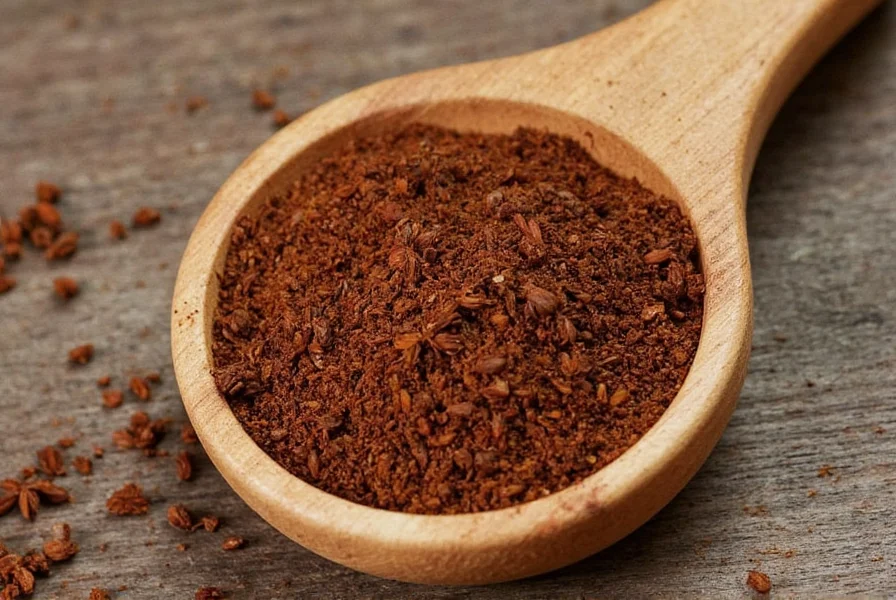Understanding the unique properties of whole allspice transforms how you approach spice selection in your culinary creations. This single berry delivers complex flavor notes reminiscent of cinnamon, nutmeg, and cloves combined, yet maintains its distinctive identity as a complete spice package.
Botanical Origins and Harvesting Process
Whole allspice berries come from the evergreen Pimenta dioica tree, native to the Greater Antilles, southern Mexico, and Central America. Harvesters pick the berries when they're still green and unripe, then sun-dry them until they transform into small, dark brown spheres about 5-7mm in diameter. This careful drying process preserves the essential oils that give whole allspice its characteristic aroma and flavor profile.

Whole vs. Ground Allspice: Critical Differences
The decision between whole and ground allspice significantly impacts your cooking results. Whole allspice berries maintain their volatile oils much longer than pre-ground versions, which lose potency within 6 months. When recipes call for simmering or braising, whole berries release flavor gradually, creating more balanced seasoning. Ground allspice works better for quick-cooking applications like baking or rubs.
| Characteristic | Whole Allspice | Ground Allspice |
|---|---|---|
| Shelf Life | 2-3 years when properly stored | 6-12 months |
| Flavor Release | Gradual, ideal for long cooking | Immediate, best for quick applications |
| Flavor Intensity | More complex, nuanced profile | Slightly diminished complexity |
| Common Uses | Stews, pickling, mulled beverages | Baking, spice rubs, quick sauces |
Optimal Storage Techniques for Maximum Freshness
To preserve whole allspice's aromatic compounds, store berries in an airtight container away from light, heat, and moisture. Dark glass jars in a cool pantry maintain quality longer than plastic containers. Properly stored whole allspice retains peak flavor for 2-3 years, compared to pre-ground versions that degrade significantly within months. Never store spices above your stove or near windows where temperature fluctuations occur.
Culinary Applications and Measurement Guidelines
When using whole allspice in cooking, remember that one berry equals approximately 1/8 teaspoon of ground spice. For best results in soups, stews, and braises, add whole berries early in the cooking process to allow gradual flavor infusion. Remove berries before serving as they remain hard even after prolonged cooking. In pickling recipes, whole allspice provides consistent flavor throughout the preservation process without clouding the brine.
Chefs specializing in Caribbean and Middle Eastern cuisines particularly value whole allspice for traditional dishes like Jamaican jerk marinades, Moroccan tagines, and Middle Eastern rice pilafs. The whole berry's controlled release creates more balanced seasoning in these slow-cooked specialties.
Substitution Strategies When Whole Allspice Isn't Available
If you need a whole allspice substitute, combine equal parts ground cinnamon, nutmeg, and cloves. However, this mixture won't perfectly replicate whole allspice's unique chemical composition. For recipes requiring whole berries (like pickling), the substitution works less effectively than in ground applications. When converting recipes, remember that 6 whole allspice berries equal approximately 3/4 teaspoon of the substitute blend.
Selecting Quality Whole Allspice
When purchasing whole allspice, look for berries that are uniform in size and color—dark reddish-brown without black spots. High-quality berries should feel heavy for their size and emit a strong, sweet-spicy aroma when crushed between your fingers. Avoid containers with excessive dust at the bottom, which indicates older product or poor handling. Buying from specialty spice merchants who disclose harvest dates ensures maximum freshness.

Traditional and Modern Culinary Uses
Whole allspice shines in applications where its gradual flavor release creates depth. Traditional Jamaican pimento dram (a spiced rum) relies on whole berries for authentic flavor. In Scandinavian cooking, whole allspice appears in pickled herring recipes and meatballs. Contemporary chefs use whole allspice in innovative applications like spiced simple syrups for cocktails, infused vinegars, and even in chocolate-based desserts where its complex profile complements cocoa's bitterness.
Frequently Asked Questions
Can you grind whole allspice at home?
Yes, you can grind whole allspice using a dedicated spice grinder or mortar and pestle. For best results, toast the berries lightly first to enhance flavor, then grind just before use. Home-ground allspice provides significantly more potent flavor than store-bought ground versions but should be used immediately as it loses potency quickly.
Why do some recipes specify whole allspice instead of ground?
Recipes specify whole allspice when they require gradual flavor infusion during extended cooking times. Whole berries release their essential oils slowly, creating more balanced seasoning in dishes like stews, braises, and pickling solutions. Ground allspice would become overpowering or lose complexity when exposed to prolonged heat.
How can you tell if whole allspice has gone bad?
Fresh whole allspice should have a strong, sweet-spicy aroma. If the berries smell faint or musty, or if they've lost their dark reddish-brown color, they've likely degraded. Properly stored whole allspice maintains quality for 2-3 years, but exposure to light, heat, or moisture significantly reduces shelf life. Crush a berry between your fingers—if it doesn't release a potent aroma, it's past its prime.
Is whole allspice safe for people with nut allergies?
Yes, whole allspice is safe for people with nut allergies as it's a berry, not a nut. Despite its name containing "all spice" and having flavor notes reminiscent of various spices including nutmeg, it contains no actual nuts. However, always check packaging for potential cross-contamination warnings if you have severe allergies, as some facilities process multiple spices together.
What's the difference between allspice and mixed spice?
Allspice refers to the single spice derived from Pimenta dioica berries, while mixed spice is a British blend typically containing cinnamon, coriander, caraway, nutmeg, and sometimes allspice. Whole allspice provides a unified flavor profile, whereas mixed spice combines multiple distinct spices. They're not interchangeable in recipes as they create different flavor outcomes.











 浙公网安备
33010002000092号
浙公网安备
33010002000092号 浙B2-20120091-4
浙B2-20120091-4